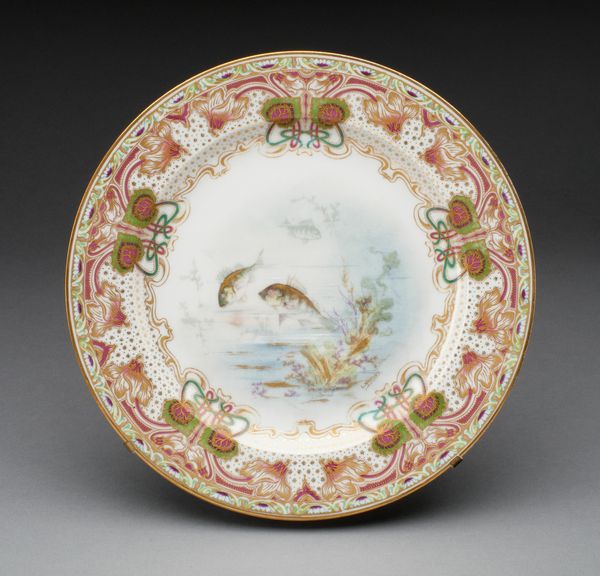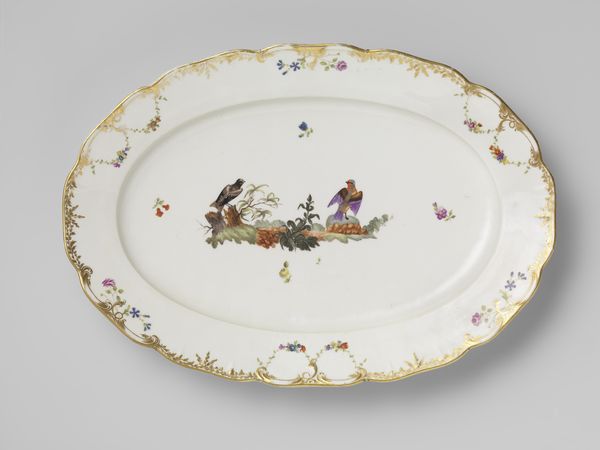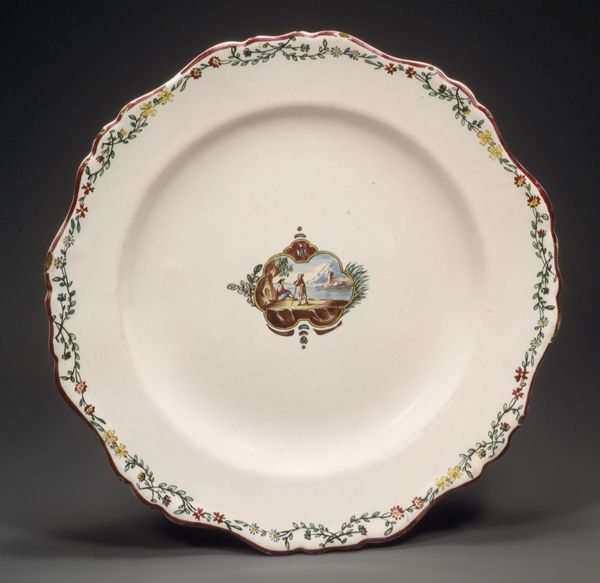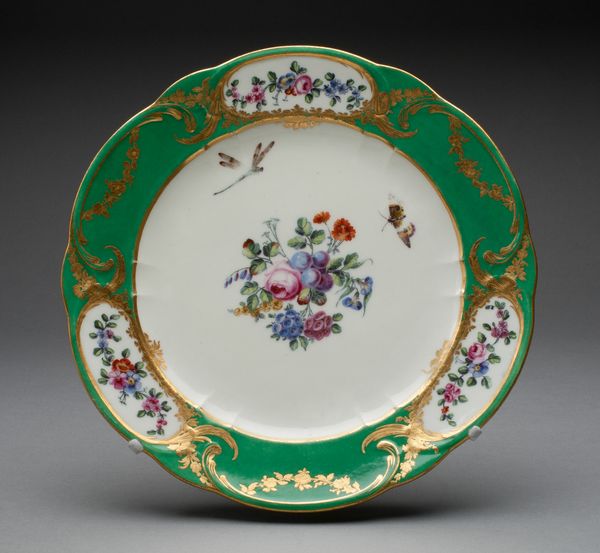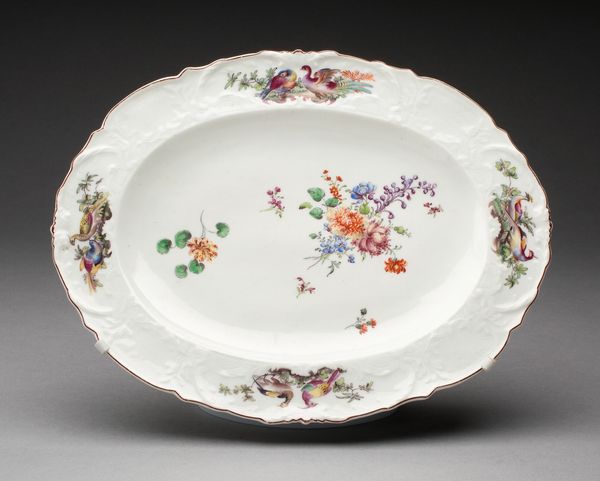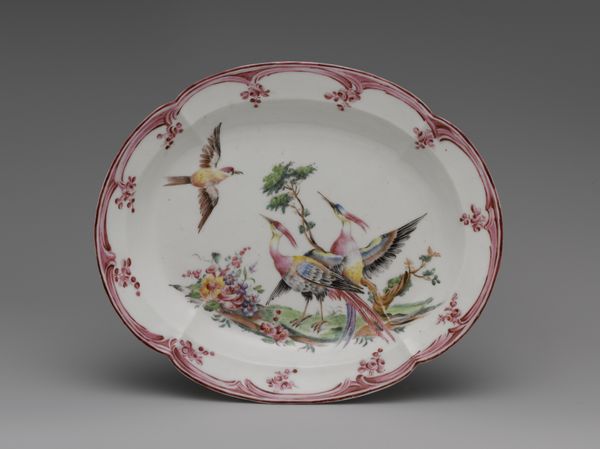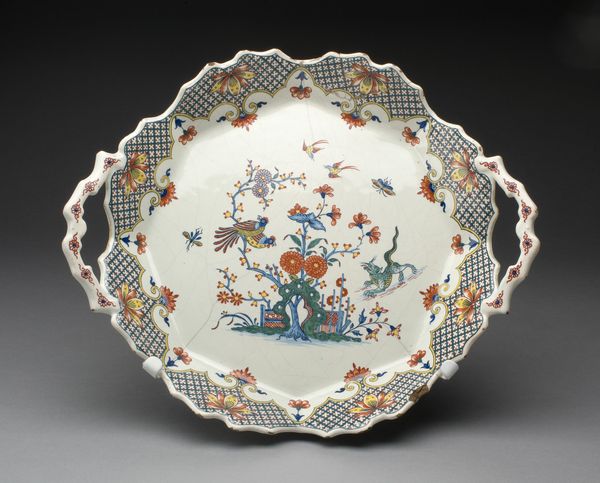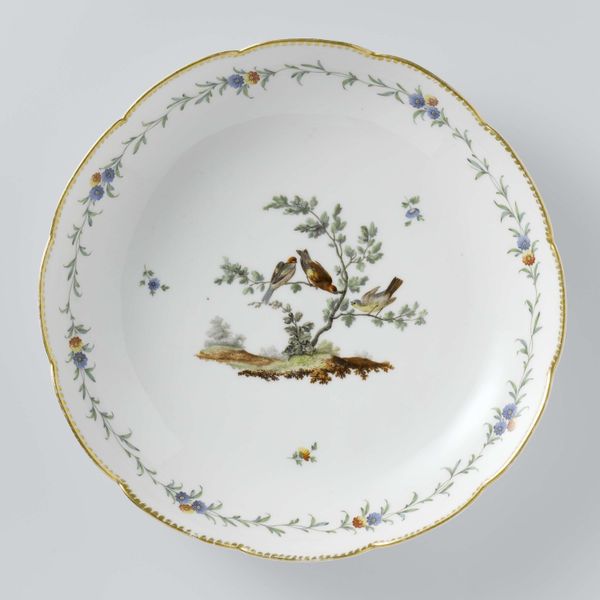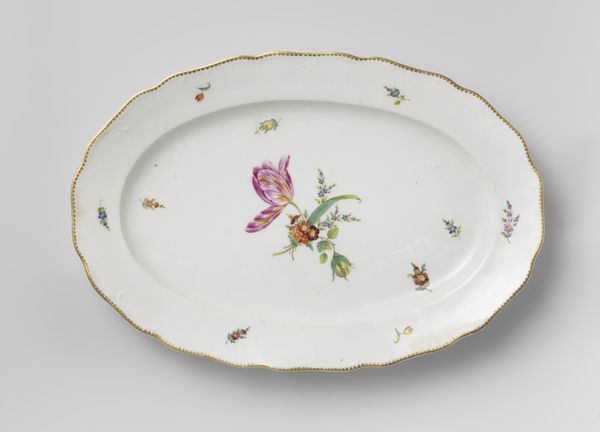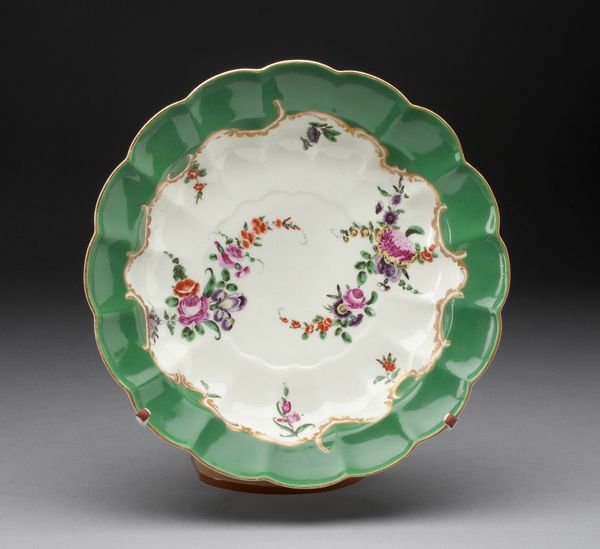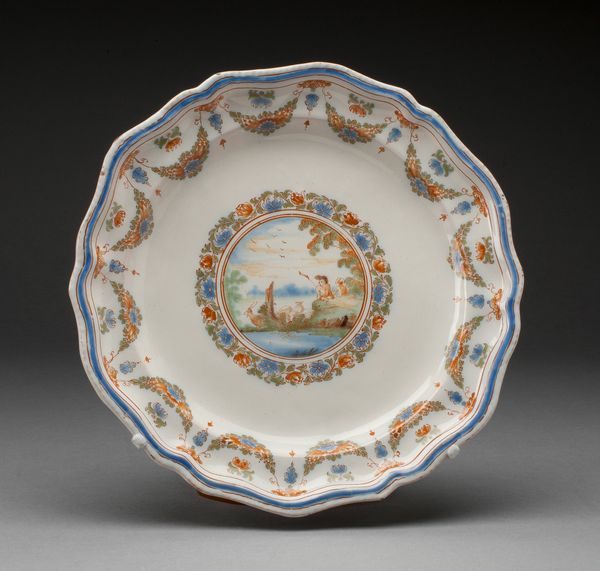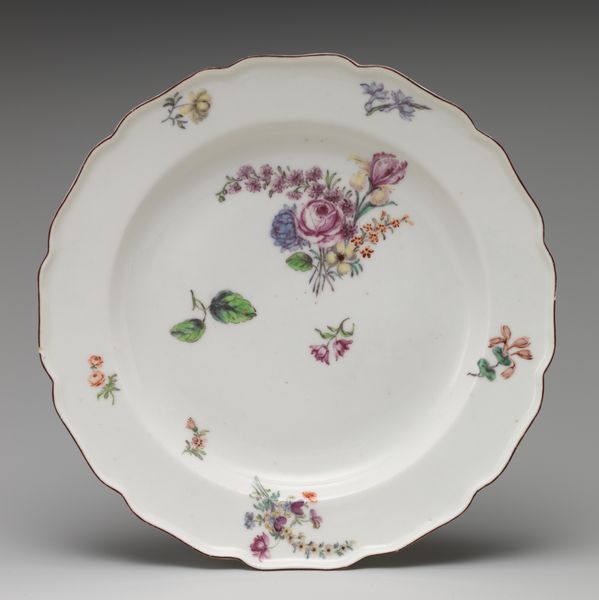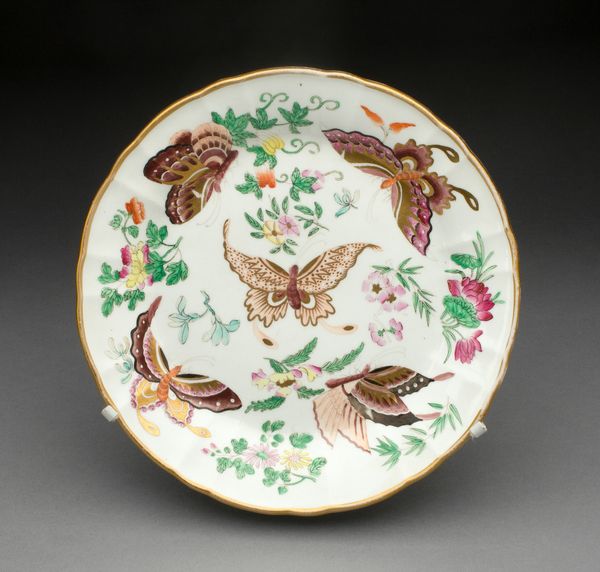
Dimensions: 4.5 × 59.7 × 24.5 cm (1 3/4 × 23 1/2 × 9 5/8 in.)
Copyright: Public Domain
Curator: Before us, we have Théodore Haviland's "Fish Platter," crafted around 1900. It's an exquisite piece of porcelain now residing here at The Art Institute of Chicago. Editor: Well, my first impression is, there’s something quite dreamy about it. The pale aquatics almost dissolve into the background—the piece conveys a sense of bountiful natural, even subconscious, sustenance. Curator: Indeed, observe how Haviland employs the ceramic medium. It’s not merely functional; it acts as a canvas. The smooth, cool surface, the delicate curvature, contribute to an impressionistic composition reminiscent of a watercolour. Note the interplay of form and design. The platter is not a simple shape. The rim is gilded. This contributes to its ornamental feel. Editor: And the fish motif is far more than a simple decoration, don’t you think? Across cultures, the fish has signified abundance, fertility, and even spiritual nourishment. The way they are depicted—leaping and swimming—brings to mind the eternal cycle of life and renewal. Curator: Precisely! There’s a compositional symmetry at play, almost a rhythmic repetition, in how these forms and colors are balanced within the defined space of the platter, which amplifies its function as a central, unifying element. It reflects back on itself structurally as much as conceptually. Editor: I wonder what banquets or celebratory rituals this platter has witnessed. Were the families aware of the multiple layers of cultural associations a simple object like this could conjure? Or was it purely aesthetic? I suspect the former. Curator: A worthwhile question, considering it in the context of evolving trends in cuisine, in domestic rituals, in the symbolic role food occupied in bourgeois life at the turn of the century in France. These are questions invited by the nature of art and design, how our understanding evolves as cultures evolve. Editor: It’s amazing how something as simple as a serving dish can open doors into history, culture, and even the collective human psyche. What looks decorative has, when probed carefully, great historical relevance. Curator: It showcases that great design, particularly well-realized form and function, possesses intrinsic meaning, transcending simple decoration and utilitarian roles, no? An object lesson for visual and semiotic literacy, wouldn't you agree?
Comments
No comments
Be the first to comment and join the conversation on the ultimate creative platform.
